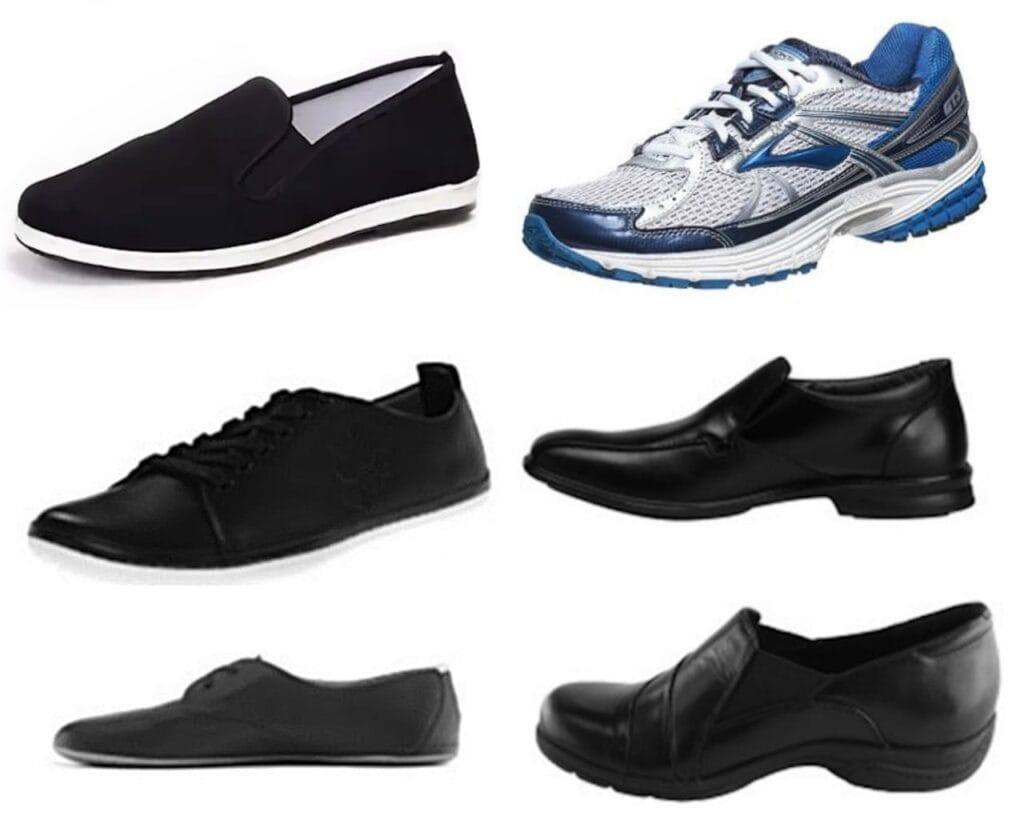There is a widespread fear that wearing ballet flats or sneakers is dangerous - supposedly they do not match the structure of the foot and thereby negatively affect the musculoskeletal system. We decided to check whether this belief is supported by scientific evidence.
Russians write that flat-soled shoes are harmful. federal media, Internet portals And publications for women. In many sources emphasizedthat wearing ballet flats or sneakers can lead to problems with the musculoskeletal system, joint pain, foot deformities and poor posture. In 2014, State Duma deputy from A Just Russia Oleg Mikheev even suggested limit the import and production of shoes with flat soles and high heels on the territory of the EAEU Customs Union.
Evolutionary human foot in particular and the entire musculoskeletal system in general intended for walking barefoot. The first prototype of shoes were animal skins, in which our ancestors wrapped their feet. Archaeological finds indicate that people wore moccasins made from parts of skins more than 40,000 years ago. Gradually, shoes changed, and their own models appeared for different natural conditions: sandals for hotter climates or boots that covered part of the leg. Vladimir Kenis from the Children's Orthopedic Institute named after. G. I. Turner explains, that the tradition of wearing shoes in its modern sense: hard sole, soft upper part is recent by historical standards; in Russia this practice became relatively widespread no more than two centuries ago. Before this, people wore shoes that did not have a sole or back and did not support the foot in any special position, and the main purposes of this item of clothing were to prevent damage and protect against extreme temperatures.
Opponents of flat shoes speak out several main arguments. Firstly, due to its shape, it contributes to the development of flat feet. Secondly, due to the lack of a heel, the body weight when walking in shoes with flat soles is shifted back, which, in turn, leads to muscle overload. Thirdly, such shoes overload all joints of the leg - from the ankle to the hip, since when walking the sole directly hits the surface, this blow is transmitted upward throughout the body, affecting the spine all the way to the cervical region.
Let's deal with these concerns one by one. The occurrence of flat feet has nothing to do with the thickness and shape of the shoe sole. Arch of the foot determined Primarily genetics, tendon injuries, bone fractures, and a number of congenital and acquired diseases (cerebral palsy, Down syndrome, hypertension, diabetes mellitus) can contribute to the development of flat feet. Some forms of flat feet do not cause a person any noticeable problems, while in others he may experience pain of varying degrees. To reduce discomfort, the doctor may indeed recommend changing shoes, but wearing one or another style cannot lead to flat feet or, conversely, protect against its occurrence. Kenis leads such a comparison: shoes affect the shape of the foot in the same way as a hat affects the shape of the head.
Body weight when walking in sneakers or ballet shoes is really shifts back. Thus, a study of a 3D model of a female foot, conducted by Chinese scientists in 2007, showedthat standing in flat-soled shoes compared to high-heeled shoes results in less pressure on the forefoot. At the same time, the pressure on the muscles that support the arch of the foot (in particular, the plantar fascia), on the contrary, increases. 2016 simulation also demonstratedIt is concluded that replacing completely flat shoes with shoes with a low heel (5.08 cm) reduces the tension force on the plantar fascia in a standing position, but increases the tension on the ligamentous structures between the foot and ankle, which can lead to instability of the latter. The researchers suggested that people who already have soft-tissue foot conditions might be better off choosing shoes with low heels for long periods of standing, but did not come up with recommendations on what kind of sole would be optimal for healthy people.
In 2019, Australian scientists compared the effect of shoes with different soles on the leg muscles of healthy men who regularly engage in sports. They invited 50 volunteers and asked half of them to train in shoes with thin flat soles, and half in regular sports shoes, the sole of which followed the structure of the foot. After 20 weeks, people from the first group had more trained ankle muscles, while their running performance and lower limb bone mineral density did not differ from the volunteers from the second group. The muscle groups trained in flat shoes are important for propulsion when walking, running or jumping, so they can make it easier to cover longer distances.
A number of scientific papers have also been devoted to the effect of flat shoes on joints. In 2009, American scientists tested different shoes on physical models. They took the most popular prosthetic foot and ankle and alternated between flat and heeled shoes of varying heights. The researchers noted that depending on the sole, the ankle and knee joints change their movement pattern to optimally adapt to its height and shape. The authors of the experiment preferred prosthetics to real people, since assessing tissue tension and detailing joint movements in living subjects was extremely problematic - in this case, sensors need to be inserted into the muscles and joints, which is impossible due to ethical restrictions associated with the risk of injury in volunteers.
However, some human studies have been conducted. Thus, in 2016, Australian scientists offered volunteers with knee osteoarthritis put on and wear different types of shoes. A total of 28 participants in the experiment tested six pairs of shoes that differed in the type of sole: flat flexible (up to 15 mm heel) or thicker (heel from 30 mm). The volunteers put on each pair in turn and walked around the laboratory for a while (the researchers did not indicate the exact duration of each phase of the experiment in the article, but judging by the fact that the entire experiment took one working day, this period of time was unlikely to exceed two to three hours).

Then the volunteers filled out a questionnaire in which they described their feelings: they rated the comfort of walking in each pair, pain in the feet and knees, and general tension. Shoes with the thinnest soles turned out to be the most comfortable in all respects. The scientists explained the results by saying that when wearing such shoes, the load is distributed more evenly and the knee joints do not suffer. However, in a similar experiment in 2021, which involved 164 participants with knee osteoarthritis, flat sole didn't show no advantages against a thicker but conforming foot. The authors of another study, which involved 31 volunteers with knee diseases, discoveredthat wearing shoes with flat soles reduces the load on the damaged joint.
Due to small samples and limitations in experimental design, it is still difficult to determine exactly what sole thickness is optimal for comfortable and safe walking. However, it is known for sure which shoes should be avoided in order to minimize the risk of negative health consequences. Firstly, these shoes are too narrow. Even wearing such a pair once can bring to bursitis (inflammation of the periarticular bursa), and permanent - to valgus deformity of the first toe.
Second important characteristic shoes - comprehensive support for the foot. In a correctly selected pair, the leg should not dangle from side to side. Finally, the third condition is that the shoe size is sufficient, between the longest toe and the toe of the shoe. should be a distance the thickness of the phalanx of a finger on your hand.
A pair of shoes with soles of any thickness may or may not have all three of these characteristics. Based on the available scientific evidence, flat-soled shoes are unlikely to be suitable for those who suffer from heel pain, but a small heel, on the contrary, will redistribute the pressure. When it comes to people with knee problems, experimental results vary: some studies show benefits of flat shoes, others find no difference. At the same time, the ankle joint and ankle of a healthy person, judging by the modeling data, are able to adapt to both flat shoes and shoes with low heels.
Cover image: Image by SplitShire from Pixabay
Read on the topic:
- Pravmir. Orthopedist Vladimir Kenis: There is no need to help nature
- Cuprum.Media. Are barefoot shoes beneficial?
If you find a spelling or grammatical error, please let us know by highlighting the error text and clicking Ctrl+Enter.






